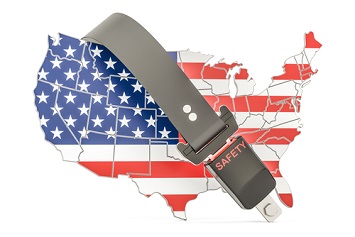Last week, the National Safety Council (NSC) released its annual list of states with the lowest and highest rates of unintentional, preventable deaths, which include poisonings (largely from drug overdoses), car crashes, and falls. Death rates were calculated per 100,000 population, and all analysis was conducted by NSC using 2017 data from the National Center for Health Statistics.
California has the lowest rate of preventable death—35.0 per 100,000 residents—while West Virginia has the highest, at 104.2 deaths per every 100,000 residents. Both rates are far below and above the national average, which is 52.2 per every 100,000 U.S. residents.
The NSC unveiled the state mortality analysis on Injury Facts—the definitive resource for data around unintentional, preventable injuries at work, on the road and in homes and communities.
Poisoning is the leading cause of preventable death in all 10 states with the highest mortality rates, and in five of the states with the lowest rates—a reminder of the national impact of the drug crisis. For the first time in U.S. history, a person is more likely to die from an accidental opioid overdose than a motor vehicle crash.
“Someone dies every three minutes in the United States because of something we know how to prevent,” said Lorraine M. Martin, president and CEO of the NSC. “Understanding the leading causes of preventable death in your state allows you to advocate for better policies and protections, so all residents can lead their best, fullest lives.”
Preventable injuries—what most people consider “accidents”—are the third leading cause of death in the U.S., and they are the primary focus of National Safety Month, observed each June. At the end of the month, the Council urged states to examine prevention strategies and reprioritize accordingly, particularly because preventable deaths tend to be higher in the second half of each year than the first.
States with the lowest preventable death rates per 100,000 population (leading cause of preventable death):
- California: 35.0 (poisoning)
- Texas: 38.0 (motor vehicle)
- New York: 38.7 (poisoning)
- Maryland: 39.8 (falls)
- Utah: 39.9 (poisoning)
- Hawaii: 41.0 (poisoning)
- Nebraska: 42.2 (motor vehicle)
- North Dakota: 44.9 (motor vehicle)
- Georgia: 45.2 (motor vehicle)
- Virginia: 46.3 (poisoning)
States with the highest preventable death rates per 100,000 population (leading cause of preventable death):
- West Virginia: 104.2 (poisoning)
- Ohio: 76.9 (poisoning)
- Pennsylvania: 74.4 (poisoning)
- Maine: 74.1 (poisoning)
- Kentucky: 73.3 (poisoning)
- New Mexico -69.9 (poisoning)
- Rhode Island: 67.8 (poisoning)
- New Hampshire: 67.5 (poisoning)
- Tennessee: 66.0 (poisoning)
- Oklahoma: 65.2 (poisoning)
Various factors contribute to a state’s preventable death rate, including demographics and population density.
The NSC urges states to address drug overdose by following six key actions outlined in the Council’s 2018 Prescription Nation report:
- Mandate prescriber education
- Implement prescribing guidelines
- Integrate prescription drug monitoring programs (PDMPs) into clinical settings
- Improve data collection and sharing
- Treat opioid overdose by increasing access to naloxone
- Increase availability of opioid use disorder treatment, including medication-assisted treatment
The NSC also urges states to address motor vehicle crashes by following the blueprint outlined in the 2018 Road to Zero report:
- Double down on what works by strengthening existing laws that counter persistent roadway killers, such as alcohol, speeding and distraction
- Advance life-saving technology, such as advanced driver assistance systems (ADAS) that help mitigate human errors and incorporate technology into infrastructure
- Prioritize safety by adopting a safe systems approach and creating a positive safety culture. This can be done in part through infrastructure design that engineers common hazards out of the driving environment.
For more about the leading causes of unintentional injury death, visit injuryfacts.nsc.org.

